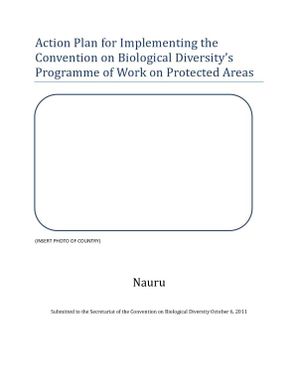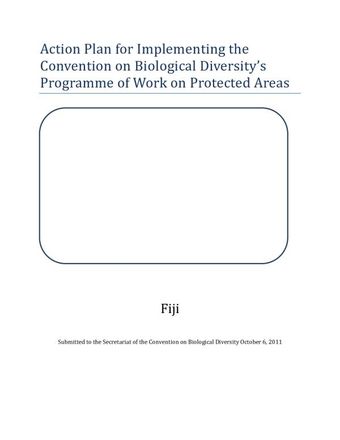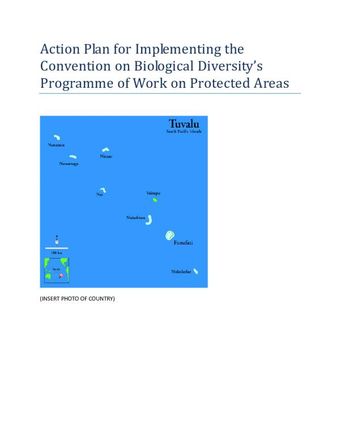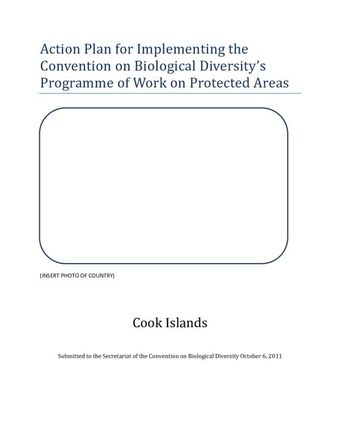Action Plan for Implementing the Convention on Biological Diversity's Programme of Work on Protected Areas - Nauru
- Description:
- Naurus targets by 2025 are to have at least 5% (=105hectares (Ha)) of the terrestrial areas which include inland and coastal areas within the boundaries baseline and 22% (=34,137Ha) of the coastal marine areas outside the boundaries baseline within the territorial sea to the contiguous zone as protected areas. The goal of Nauru is to enhance development and sustainable management of terrestrial, marine and fisheries resources to provide sustainable economic returns. The strategies are to ensure sustainable practices are implemented to safeguard the terrestrial and marine biodiversity and ecosystems including rehabilitation of mined land. The long term goal is to have the main biodiversity and ecosystems protected through protected areas using relevant conservation planning techniques. Nauru is a country with around 85% of the surface area rendered uninhabitable due to strip mining for phosphate and majority of people residing on the coastline except for Buada district, the only inland district community with no coastline. Rehabilitation of the mined areas of the island is the greatest challenge for the country. The economic downturn of Nauru saw a substantial decrease in wage rates within the public sector which accounts for around 80% of employment in the country. This resulted in an increase in fishing especially reef gleaning which has amplified the usage of reef resources on an already heavily exploited reef. The challenge for Nauru is to identify the best area(s) for protection, gather support and manage, monitor, evaluate the area well to ensure the goals are being achieved and food security is secured. These two areas of challenge are necessary and needed for the security and well being of our people.
- Display date:
- 2011
- Collections:
- Secretariat of the Pacific Regional Environment Programme (SPREP)
- Publisher:
- Department of Commerce
- Content partner:
- Secretariat of the Pacific Regional Environment Programme (SPREP)
- Availability:
- Not specified
-
Copyright status: All rights reservedFind out more about what you are able to do with this itemThis item is all rights reserved, with means you'll have to get permission from Secretariat of the Pacific Regional Environment Programme (SPREP) before using it. For more information, please see our use and reuse page.What can I do with this item?Non-infringing useNZ copyright law does not prevent every use of a copyright work, and this item may be hosted by an international institute or organisation. You should consider what you can and cannot do with a copyright work.No sharingYou may not copy and/or share this item with others without further permission. This includes posting it on your blog, using it in a presentation, or any other public use.No modifyingYou are not allowed to adapt or remix this item into any other works.No commercial useYou may not use this item commercially.
Related items
Welcome and warm Pasifik greetings
The information on this site has been gathered from our content partners.
The names, terms, and labels that we present on the site may contain images or voices of deceased persons and may also reflect the bias, norms, and perspective of the period of time in which they were created. We accept that these may not be appropriate today.
If you have any concerns or questions about an item, please contact us.



